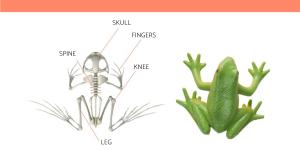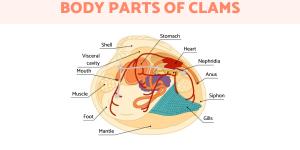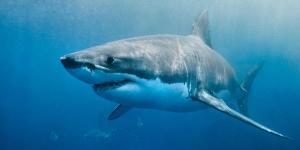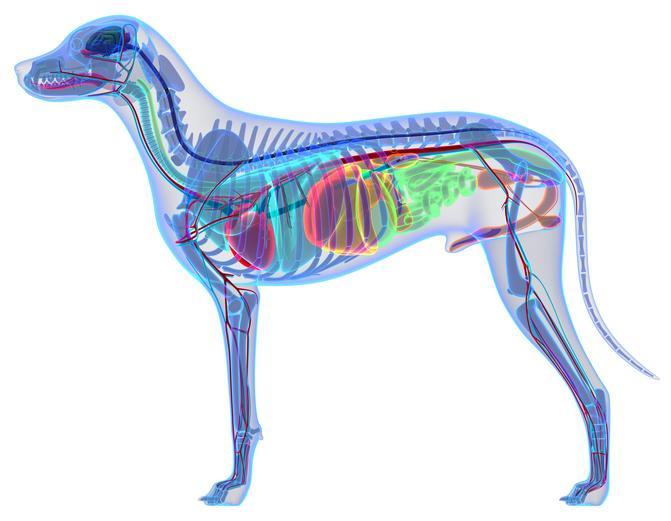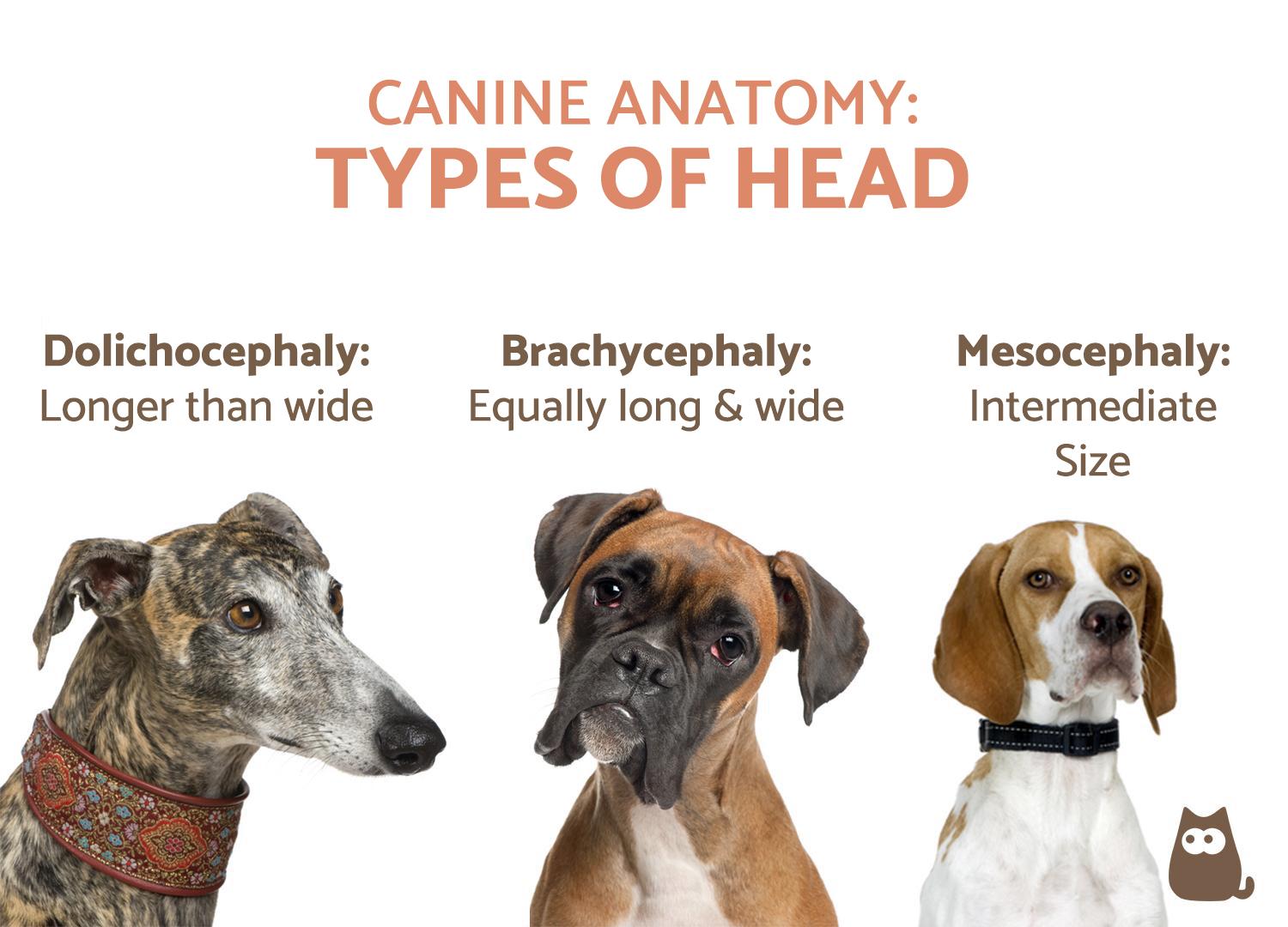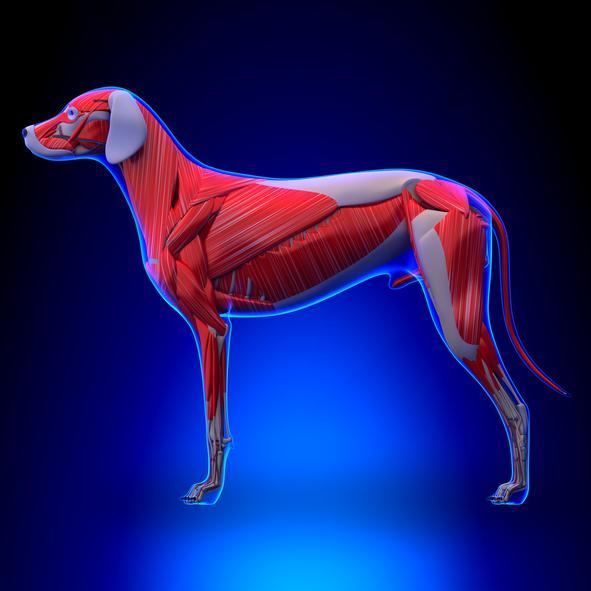Dog Anatomy Guide - Muscles, Bones and Organs

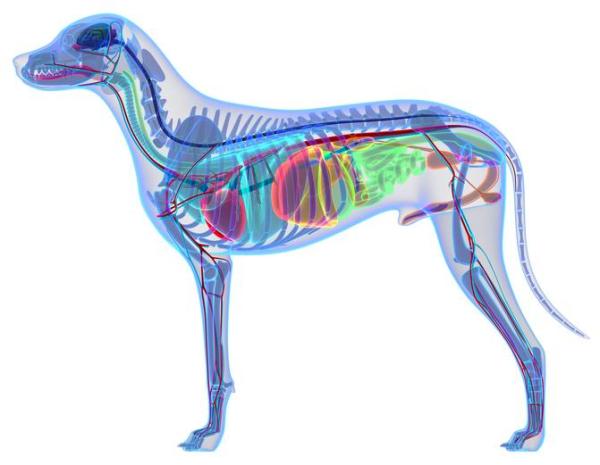

See files for Dogs
The anatomy of domestic dog (Canis lupus familiaris) is something which is difficult to qualify. The main reason for this is because there are so many dog breeds in the world. More than 300 are officially recognized by standardization bodies such as the FCI as well as the many mixed breed variants which are not recorded. The morphology of these dogs varies from the largest Great Dane to the smallest Yorkshire Terrier. Size is not the only issue, with facial structure, leg length and much more varying greatly between breed.
This is why AnimalWised brings you this dog anatomy guide where we look at the general categories for muscles, bones and organs of dogs. We discuss the internal and external anatomy of dogs so that you can see that, despite individual differences, there is a reason they are all considered part of the same species.
Canine anatomy
As we explain above, canine anatomy is far ranging due to the diversity of existing breeds. These different breeds not only differ from each other in size, but in the shape of many body parts. Perhaps the most significant is head shape. There are three main different types of head formation in dogs:
- Dolichocephaly: dolichocephalic dogs are those with a head which is longer than it is wide. The skull and snout are elongated and their eyes are located in a lateral position, making it difficult to see well bifocally. The breeds which perhaps most represent this type of skull are Greyhounds or Whippets. They also tend to have a les pronounced stop. This is the angle at which the snout and the forehead of the dog's skull meet.
- Brachycephaly: the head of a brachycephalic dog tends to be characterized by being equally long as it is wide. Additionally, they have a very marked stop. Due to their particular anatomy, they tend to suffer respiratory problems, the acuteness of which depends on the acuteness of the brachycephaly. Breeds which possess this skull shape include Bulldogs, Boxers, Pugs, Pekingese and others.
- Mesocephaly: mesocephalic dog breeds have a medium sized head with intermediate characteristics between the above two head shapes. They may or may not have a marked stop. Pointers, Beagles, Fox Terriers and similar breeds have skull shapes of this type.
As part of he head, we will find the dog's snout, something which can be short, wide or narrow. The snout borders the forehead at the stop. It comes in a wide variety of formations, with very convex pronouncements in the shape of brachycephalic dogs and very complex ones in breeds such as the Bedlington Terrier. The snout ends at the end of the dog's nose. Their nose is covered in a layer of hardened furless skin which differs in shape and color depending on the breed and individual dog.
A similarity in dog anatomy is that all dog breeds have the same amount and type of teeth, even if their bite shape varies. Some dog's teeth clamp together when they close their mouth with their incisors rubbing together. Others have a scissor type bite where the inner edge of the upper incisors rub against the outer edge of the lower incisors. Additionally, there are dogs with proganthism. This is a condition where the lower jaw protrudes out from the upper one. This is very typical of breeds such as the Boxer or French Bulldog. Finally, when the upper incisors protrude past the lower incisors, we refer to enognatism. This is always considered a defect in a dog and is not linked to any particular breed.
As with other parts of a dog's anatomy, the eyes and ears also differ greatly between breeds. Some dog ears are pointed, rounded, erect, fallen, droopy, etc. Eyes also have different shapes such as rounded, oval or triangular. The position on the face differs between individuals as some may be more centrally placed, others deep set and some may even protrude i a bulging manner.
A key part of a dog's anatomy is the tail. This limb is often cut by certain breeders in a process known as ‘docking’. This is usually for aesthetics, although some working dogs may have them docked to protect them from being caught. Whatever the reason, it will affect their ability to communicate with other dogs and humans since it is an intrinsic part of their body language. A dog's tail can be of varying length and shape. Some are situated higher up on the rear fo the dog, while others are lower down. They can be straight, curled or stumpy to varying degrees.
The dog's body is made up of their chest and abdomen. The shape of the dog's body is influenced by the shape and length of their spine (which we will see in more detail in the next section). We measure the dog's height at the withers which is the part across their shoulder blades just where the thorax meets neck. Both the withers and the rump (the final part at the end of the dog) can be of different height. This leads to some dogs sloping in different ways, but will depend on the breed.
As you will see, the anatomy of the domestic dog is varied. The reason for this has a lot to do with humans, During the domestication process, we have crossbred dogs to the point of creating very distinct and particular breeds. Unfortunately, while aesthetically pleasing for us, it often results in very serous consequences to the health and well-being of the dog.
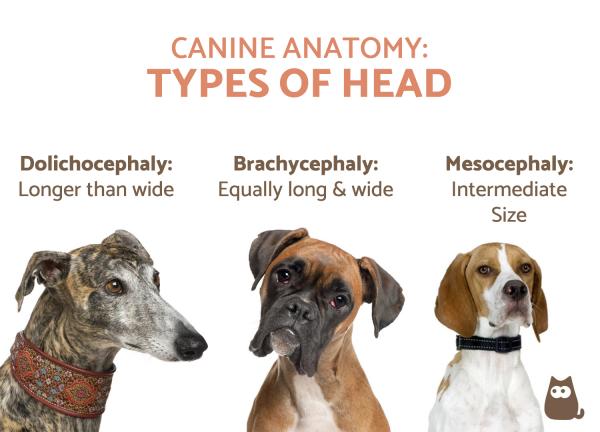
Dog skeleton
As with any vertebrate animal, the skeleton of a dog has the function of supporting the body for movement and protecting its internal organs. We can divide the canine skeleton into three main sections:
- Axial skeleton: skull, spine, ribs and sternum bones.
- Appendicular skeleton: bones of the extremities.
- Splanchnic or visceral skeleton: these bones which developed inside viscera for support or other purposes, such as the bone of the penis.
The cranium of a dog has many crests, protuberances and apophyses (normal bone outgrowths which arise from ossification), as well as the various joints of the skull bones. These all facilitate the attachment of various muscles in the dog's head.
The dog's spine is divided into cervical vertebrae, thoracic vertebrae, lumbar vertebrae, sacral vertebrae and coccygeal vertebrae.
- Cervical vertebrae: there are seven cervical vertebrae in every dog, even if some dogs may have a longer neck than others.
- Thoracic vertebrae: dogs have thirteen thoracic vertebrae which play an important part in the spine of the dorsal area. The first dorsal vertebrae determines the region of the withers from where the dog's full height is measured.
- Lumbar vertebrae: these seven vertebrae constitute the base of the spine.
- Sacral vertebrae: there are three sacral vertebrae which are fused to the hips and form the base of the rump.
- Coccygeal vertebrae: the sacral vertebrae lead into these bones and it is into this area the tail bones are inserted. Due to differences in tail, this is the only part where the number of vertebrae will differ according to breed. However, there are generally between 20 and 23.
To continue with the skeletal structure of the dog's anatomy, we take a look at the extremities. The front limbs of a dog are formed by the following bones (starting with bones closest to the body and moving outwards):
- Scapula
- Humerus
- Radius
- Ulna
- Carpals
- Metacarpals
- Phalanges
The bones in the hind limbs (again moving away from the body) are:
- Coxal
- Femur
- Tibia
- Fibula
- Tarsals
- Metatarsals
- Phalanges
Dogs have thirteen pairs of rib bones, all articulated at the dorsal vertebrae. Only nine of them are articulated with the sternum, the four remaining are joined together by an elastic tissue. The ribs have different morphologies depending on the breed of dog, but we can find 4 different types:
- Arched ribs: these are ribs with a soft formation, well separated from the spine and joining the sternum without creating sharp edges.
- Barrel shaped ribs: these are ribs with a very arched shape and are separated from the sternum.
- Flat ribs: these are the ribs which are well arched, but fall steeply in parallel with each other.
- Ribs in keel: these ribs have a good curvature, but join to the sternum abruptly.
Male dogs also have a penis bone, known as the baculum. This is common among mammals as it is used to maintain an erection during intercourse. Theoretically, this is believed to be down to the fact that dogs have to copulate for longer as they have less opportunity for mating in the wild (i.e. they have to make it count). Humans do not have a baculum as it is believed we have more opportunity thanks to relative availability of partners.
How many bones does a dog have?
Not every dog will have the exact same amount of bones, although this is not simply because of differing tail lengths. In general dogs have an average of 321 bones. This will depend partly on whether or not they have dew claws (vestigial fingers) and partly on their tail length. Mastiffs are more likely than most other breeds to develop dew claws. Most individuals in the Pembroke Corgi breed are born without a tail, which means they generally have fewer bones than other dogs. Similarly the Brittany Dog is often born tailless. In any case where a dog is born without a tail, it is due to a genetic mutation which is a negative trait as it disadvantages the dog in various ways.
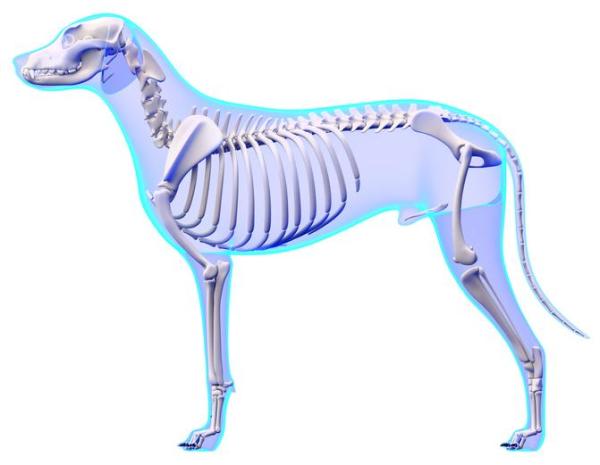
Muscles of the dog
A major part of a dog's anatomy is their musculature. This is a system formed by muscles, tendons and ligaments. A dog can have between 200 and over 400 muscles. Again, the amount of muscles an individual dog has depends on the breed and the individual. Curiously, some dog breeds will have more than 50 muscles in their ears alone.
As we can see in the image below, the majority of a dog's muscles are concentrated in the front of their body. This is where the dog's core strength is required. Many of the muscles, especially those on the neck and thorax, are located around the sternum which helps give the dog strength to run and hunt.
One of the most important muscles is the masseter muscle. This is located on the head in the area around the cheek. This muscles is very developed in certain breeds such as the American Staffordshire Terrier which helps to give them a strong bite. The shape and size of a dog's muscles will have a lot to do with the breed. Some simply have a more developed musculature than others.

Organs of dogs
The internal anatomy of dogs, is very similar to the anatomy of other carnivorous mammals such as the cat. Dogs have a well-developed brain which is composed of different parts. The cerebrum is the part of the dog's brain which performs functions such as learning. The cerebellum is for coordination and the medulla oblongata which is located in the brainstem. This latter part is used for autonomous function such as breathing and connects to the spinal cord.
The circulatory system of the dog contains the heart which located in slightly to the left in the thoracic cavity (the same as a human). It is also comprised of veins, arteries and capillaries which distribute blood around the body.
Dogs breathe using lungs. They are part of their respiratory system which is also comprised of the larynx (where we find the vocal cords), the trachea, the bronchi and the lungs.
Dogs are facultative carnivorous animals, meaning their digestive system is designed for the consumption of meat. The digestive tract is made up of the esophagus, stomach, small intestine, large intestine, liver, pancreas, gallbladder and various attached glands.
For excretion and blood cleansing, dogs have two kidneys (one located higher than the other) and a bladder for accumulating urine. The urine is then expelled via the urethra.
The reproductive system of male dogs consists of testicles, the prostate, seminal vesicles and the penis. For female dogs (bitches), he reproductive system is comprised of the vulva, the clitoris, the vagina, he cervix and the uterus. The uterus is where puppies gestate and is attached to the ovaries.
Finally, dogs have a set of glands which produce hormones for the regulation of the organism. These glands are as follows: pituitary, thyroid, parathyroid, thymus and adrenal glands. Despite these glands, all organs contribute to hormonal regulation, including the ovaries, testicles, liver, kidneys and pancreas.
If you want to read similar articles to Dog Anatomy Guide - Muscles, Bones and Organs, we recommend you visit our Facts about the animal kingdom category.
- Fariña, J. (2011). Illustrated manual of cynology . Council of judges. Chapter 2. Anatomy, 13 - 35.

